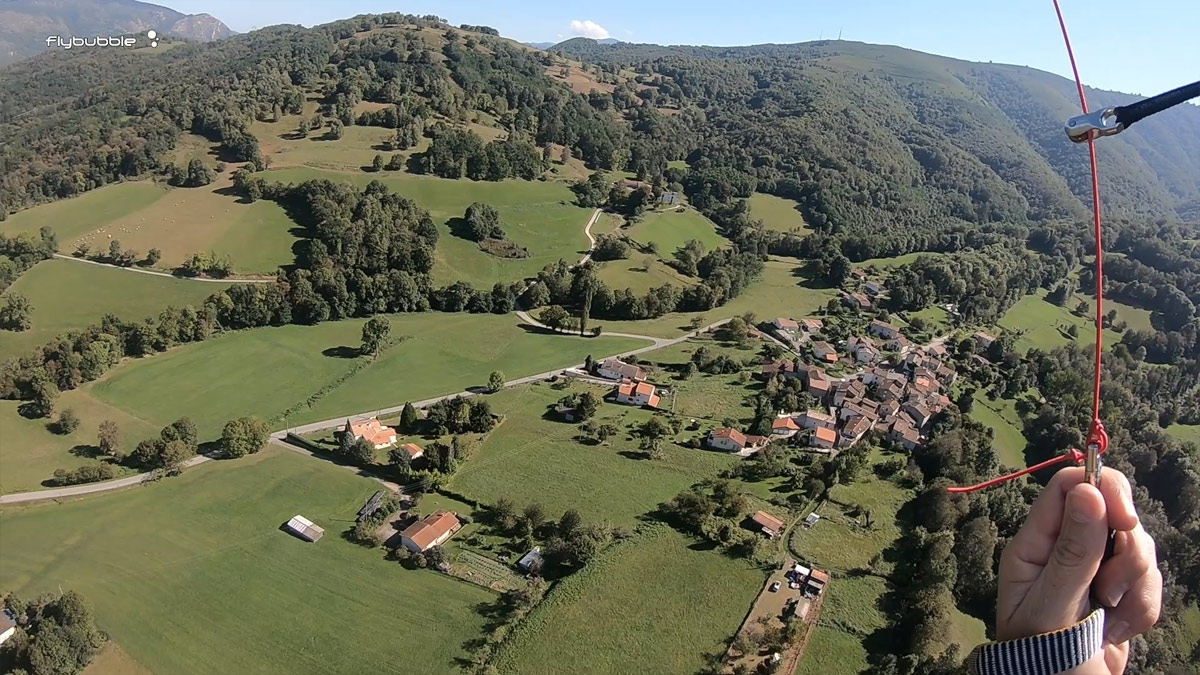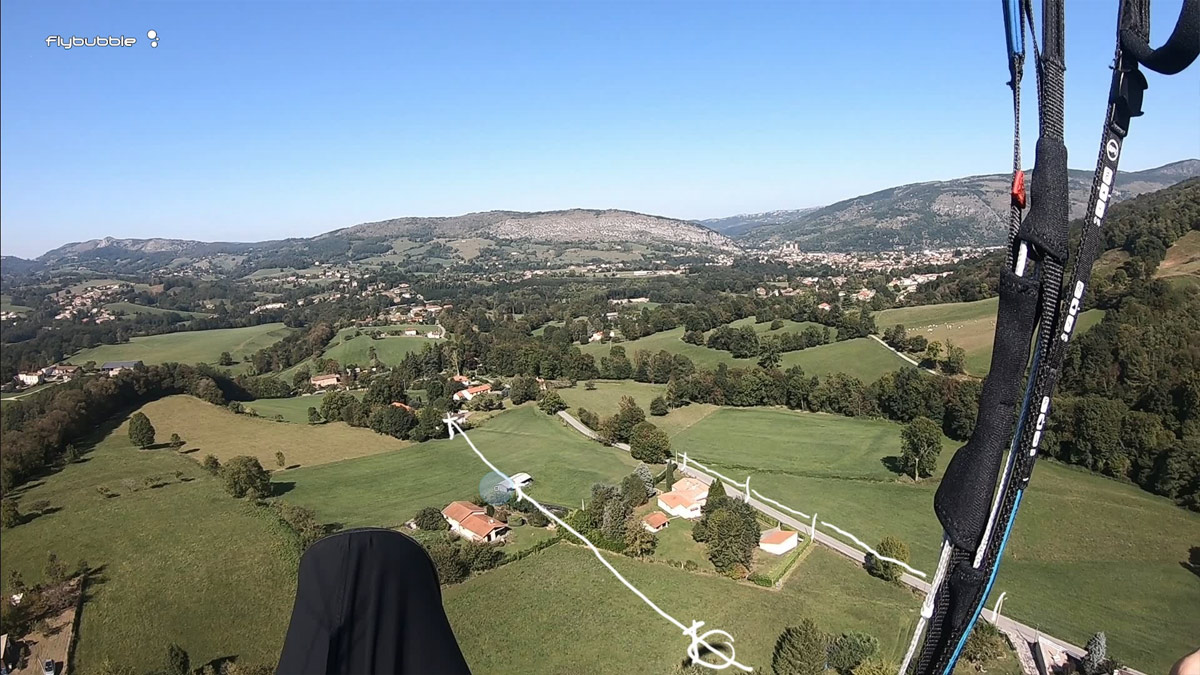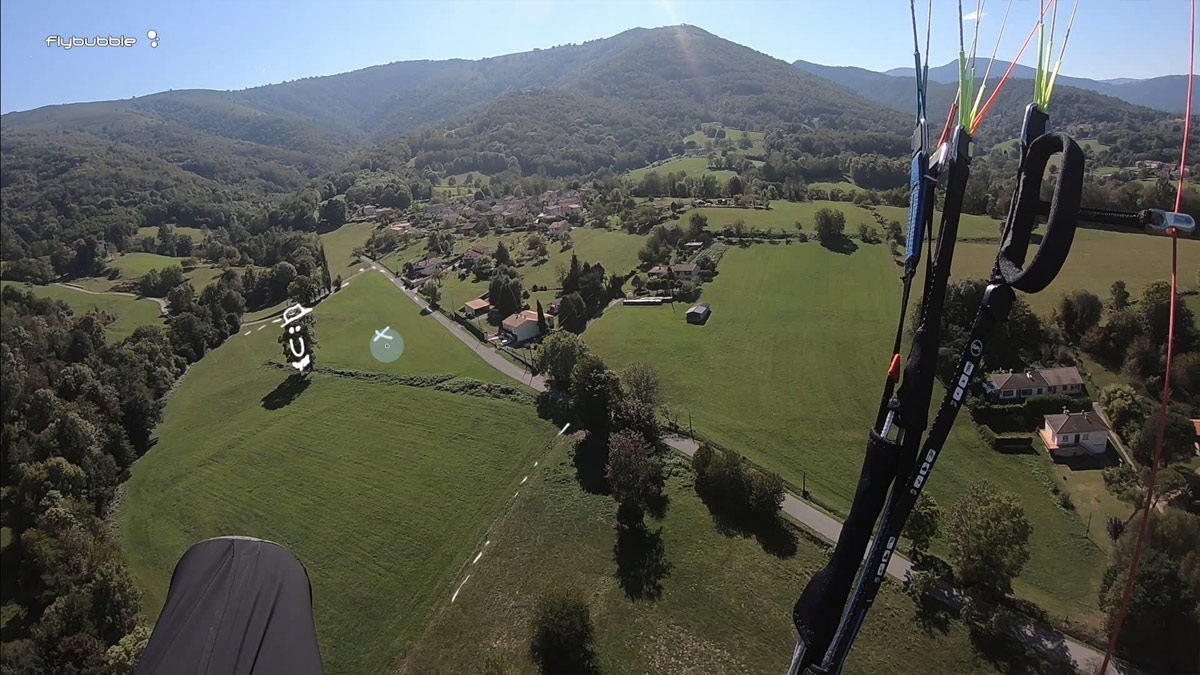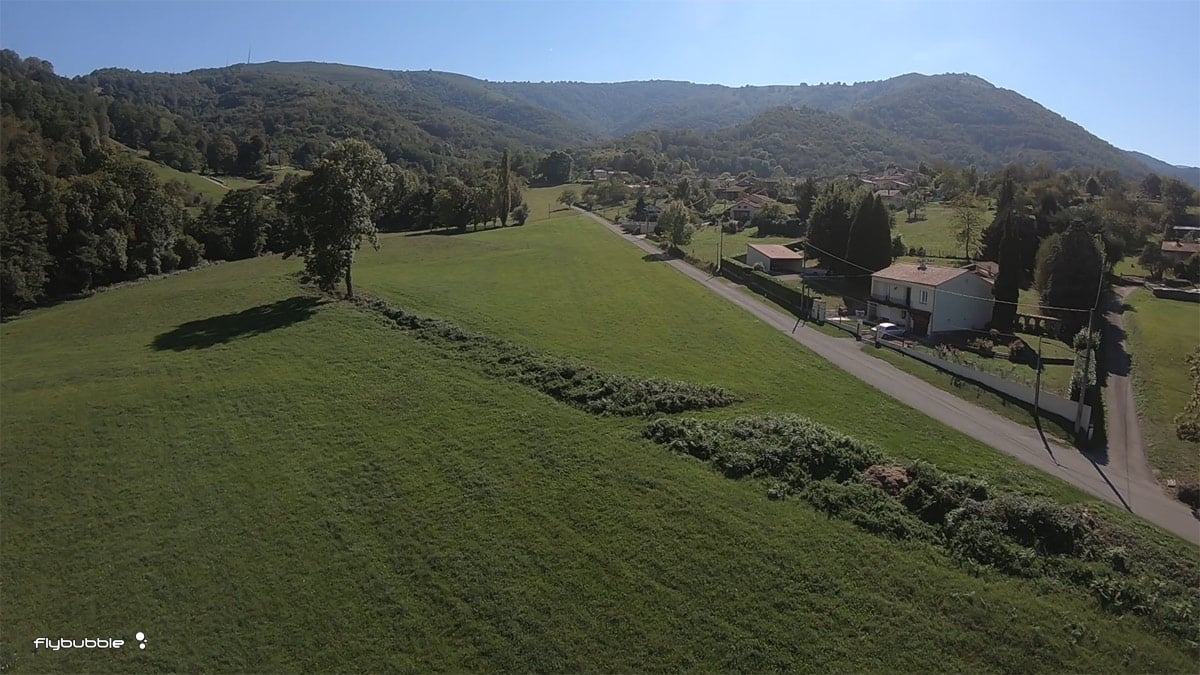
For beginner paraglider pilots, venturing beyond the safety of the ‘known’ landing field can be scary. How do you know if you can reach another landing? What if there’s a power line? And without a windsock, how will you know which way the wind is blowing?
Let’s take a look at a simple generic landing approach which you can adapt to various situations. This assumes light winds and some open fields close to a village – your typical XC outlanding.
First, check out our video for some essential theory in Windspeed airspeed and groundspeed explained
-
Establish the wind drift

As you approach the area and still have enough altitude to find alternative landings, check the wind direction. First look for obvious indicators like smoke, dust, trees and ripples on the water.
Make a steady circle and watch your ground drift. The wind will elongate your circle, and your groundspeed will be reduced when you’re pointing the right way. Getting visual confirmation can help you develop the skill to sense this without needing instruments.
By all means make a secondary confirmation / check using your GPS. Assuming you’re landing at a low altitude, your trim speed (gliding hands up) should be around 37km/h. Watch the GPS ground speed as you do a slow circle, and when the speed is lowest you are pointing into wind.
-
Identify an open surface lined up with the wind

A long rectangle gives you more space to overshoot and helps to smoothen out the airflow. The field on the bottom left of the picture looks promising, except for the powerline that bisects it - so I've chosen the long field with the big tree instead.
-
Identify hazards

Telephone lines and power lines are best avoided, but you can safely fly parallel to them. Tall trees will generate a sheer layer / turbulence, and can be very risky if you end up landing in them. Some livestock is indifferent (cows, sheep) but some can be dangerous (ostriches, horses, and the Spanish fighting bull). Look for your exit gate. Watch out for ditches or large rocks.
-
Make allowance for the slope of the field
In a tailwind or light thermic lift, a sloping field will mean your final glide will become very long. If the wind is very light, you can land uphill to reduce the distance you travel before meeting the slope. Just be sure to make a straight, fast approach (hands up) with a good, deep flare to make a soft landing.
-
Choose an approach pattern that suits the situation
The aircraft landing approach (downwind leg, crosswind, into wind) is not always the safest. Sometimes coming in slowly from one side is best, or using figure of eights at the downwind (light wind) or upwind end of the field (strong wind). Plan to give yourself the longest straightest final glide you can, so that as you pass through the turbulence generated by ground obstacles, you are not required to turn too much.
The idea is to take account of the terrain and emergency landing areas so that you are never flying yourself into a position with no landing options, should you hit sink/turbulence/unexpected wind.
-
Pick a spot

Make it a habit every time you land, to choose a spot to aim for. Over time, this improves your spot-landing ability which will help you when you have an emergency landing in a crazy small clearing. This also helps you avoid ‘hazard fixation’ where your attention becomes trapped by said Spanish fighting bull that you injure yourself by crashing into its enclosure.
-
Avoid low turns
This gets many pilots. You make a nice setup, then at the last moment, you see a rock/piece of wire/tree stump and hook one brake to avoid it. This guarantees a hard, perhaps ankle-breaking landing, because you make the wing drop into the turn and induce a big swing as your body catches up with the wing. Even if you see a hazard, keep it straight, flare hard, and you can often just run over it. If you do make an adjustment, make it very subtle – a small touch on the brake is usually enough to change your final landing position by a few metres, and that’s often all you need.
-
Legs down early
After a long flight, you’re often tired, and it can be tempting to just sit in your harness until the very last moment. This is often the cause of ankle injuries, because your feet are then ahead of your body weight instead of underneath it. So the full force of your not inconsiderable weight is taken on a bendy joint designed for moving, not stopping.
No matter how simple the landing appears to be, tip your legs downwards from the harness and stand completely upright when you are 20m/50ft above the terrain – higher if conditions are turbulent. That way your legs can absorb the landing force by running, and if the wing collapses, you can do a PLF (Parachute Landing Fall)
-
Speed it up

It goes against your instincts to go faster as you near the ground, but it’s what your wing needs to generate a nice flare with good roundout which minimises the touch down impact. Gentle and slowly let your hands go up after you’ve got your legs down, and whiz along until your feet are skimming the grass tops.
-
Finesse the flare
That’s the moment to go deep down on those brakes and hold them in, so you land like a fairie on a petal. If you’re a little late on the flare, it’s best to slide in on your feet so you don’t trip yourself up. If you’re a little early on the flare, you might swoop up a bit. In this case, finesse the flare by doing a few ‘butterfly’ pumps on the brakes (quick release, gradual but immediate application). This is to prevent the wing stalling or shooting ahead. Practice makes perfect.
Have a look at our landing approach video to learn more.
Brought to you by Flybubble
Like what we do? The best way to thank and support us is to buy gear from us and recommend us to others. Review our service on Trustpilot and our products on Flybubble Shop. You can also subscribe to Flybubble Patreon. Thank you!

